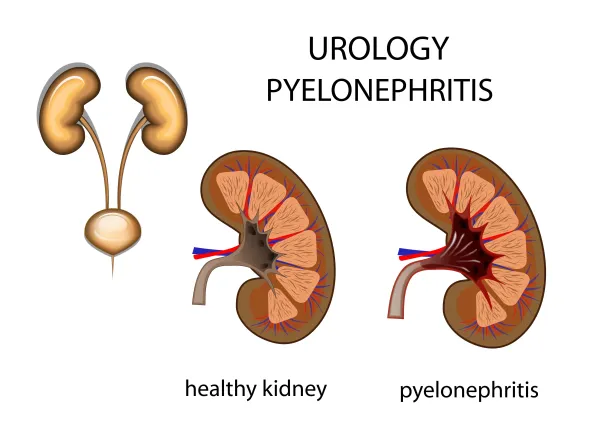Primary Care Coding Alert
Know What’s Necessary to Prove Necessity
Critical: Find out what documentation is required.
Medical necessity is a term that gets thrown around a lot in the healthcare industry. As a coder, you understand that medical necessity is important, but how deep is your understanding of its impact on coding?
Here, we’ll examine the definition and outline services with examples that most payers will expect you to submit to prove medical necessity.

What Is Medical Necessity?
A deeper understanding of medical necessity will help you better support your coding and bolster your claims. Definitions of the term are, unsurprisingly, varied and vague. However, there is some consensus among various medical institutions, according to Kim Huey, MJ, CPC, CPCO, COC, CHC, CCS-P, PCS, president, KGG Coding and Reimbursement Consulting and Sandy Giangreco Brown, BS, RHIT, CHC, CCS, CCS-P, CPC, CPC-1, COBGC, COC, PCS, director of coding and revenue integrity at CLA in their HEALTHCON 2021 presentation “Medical Necessity: Defining and Documenting to Support Billing.” To meet the criteria of medical necessity, Huey and Brown explain that services should be:
- In accordance with “accepted standards of medical practice” (AMA);
- “Reasonable and necessary for the diagnosis or treatment of illness or injury” (Medicare);
- “Neither more nor less than what the patient requires at a specific point in time” (American College of Medical Quality); and
- Not for the economic benefit of the health plan, purchaser, provider, or even the patient (AMA).
Look for Diagnostic Laboratory Tests
Whenever you see diagnostic tests in the provider’s notes, know that proof of medical necessity is required. It might seem obvious to you and the provider that blood work or imaging scans are medically necessary as part of a patient’s condition or treatment plan, but it’s not obvious to the payer.
Example: Let’s say a patient comes to their primary care provider (PCP) with symptoms of fatigue, weight loss, and frequent urination. The provider suspects the patient may have diabetes and decides to order a Hemoglobin A1C test, which measures average blood glucose levels over a three-month period.
Documentation: In this case, the provider must document the patient’s symptoms, their medical history, and the rationale for ordering the test (suspected diabetes) in the patient’s medical record. This documentation serves as evidence of medical necessity for the Hemoglobin A1C test, as it is relevant to the patient’s condition and can help guide their diagnosis and treatment plan.
Look for Preventative Services
Certain preventive care services like immunizations, health screenings, and some counseling may require documentation of medical necessity to justify the services being provided to the patient. Typically, this documentation must support that the patient meets the criteria in relevant clinical guidelines.
Example: A 47-year-old patient visits their PCP for a preventative exam, and the patient has a family history of colorectal cancer (CRC). If the patient has not already been screened for CRC, the PCP may recommend a colonoscopy screening as part of the patient’s comprehensive preventive care plan, especially as the patient is the appropriate age for the screening and has a family history of CRC.
Documentation: Payers want to clearly see the patient meets the criteria for a colonoscopy screening in accordance with recommended guidelines for patients in this age group with a family history of colorectal cancer. While the patient’s age is likely known by the payer, other criteria (e.g., family history of colorectal cancer) may not be but should be clear from the medical record, if requested.
Look for Referrals to a Specialist
Anytime the PCP refers a patient to a specialist, such as a cardiologist or neurologist, the documentation needs to support that the referral is medically necessary for the patient’s treatment or management of their condition.
Example: A patient visits their primary care provider with persistent headaches and occasional dizziness. The patient’s symptoms have not improved with over-the-counter (OTC) pain relievers. After a thorough examination and initial evaluation, the primary care provider decides to refer the patient to a neurologist for further evaluation and treatment. The PCP suspects the patient might be experiencing migraines, which would be consistent with their family history.
Documentation: The patient’s symptoms, their medical history, the initial evaluation, and the rationale for the referral to a neurologist should all be clearly explained in the documentation. The PCP feels the patient’s condition requires specialized care beyond the scope of primary care, so the payer needs to see everything that led to that decision, if requested.

How Does Medical Necessity Impact E/M Coding?
Medical necessity doesn’t just affect diagnosis and procedure coding. It also plays a major role in submitting the correct evaluation and management (E/M) codes.
The Centers for Medicare & Medicaid Services (CMS) has always maintained that medical necessity is the fundamental basis of payment. But it’s still a common misconception that since history and physical exam haven’t directly contributed to office/outpatient E/M code selection since 2020, there is no reason to spend time documenting the history and examination. Proving medical necessity is one good reason, however.
When selecting outpatient E/M codes, you must ensure that the chosen codes accurately represent the level of service provided. The chosen level of E/M code, in turn, should match medical decision making or amount of time on the date of the encounter needed to manage the patient’s condition. Documentation of history, examination, and the decision-making process can all support the medical necessity underlying the level of service reported, and payers may deny reimbursement for services if they believe the E/M code does not align with the medical necessity of the provided services.
Example: If you report 99214 (Office or other outpatient visit for the evaluation and management of an established patient, which requires a medically appropriate history and/or examination and moderate level of medical decision making. When using time for code selection, 30-39 minutes of total time is spent on the date of the encounter.) but the documentation only shows that the patient had congestion, a sore throat, and the PCP diagnosed a common cold, that code will surely raise a red flag to the payer without significantly more information explaining the moderate level or 30–39-minute time.
The bottom line: “Tell a story with your documentation. Don’t rely on diagnosis documentation alone. And review any payer medical policies and document in their terms,” said Huey and Brown. Or, to put it another way, follow CMS’ 1995 Documentation Guidelines for Evaluation and Management Services, which state, “If not documented, the rationale for ordering diagnostic and other ancillary services should be easily inferred” (Source: www.cms.gov/outreach-and-education/medicare-learning-network-mln/mlnedwebguide/ downloads/95docguidelines.pdf).
Related Articles
Primary Care Coding Alert
- Documentation:
Know What’s Necessary to Prove Necessity
Critical: Find out what documentation is required. Medical necessity is a term that gets thrown [...] - Condition Spotlight:
Sweeten Your Understanding of Diabetes Coding with This FAQ
Also, gain insight into provider education. As primary care coders, you’ve likely seen your fair [...] - Testing:
Clear Up Coding Confusion With This Comprehensive Urinalysis Review
Plus: Review important details on the QW modifier. Urinalysis tests are frequently performed and relatively [...] - You Be the Coder:
Review This Oximetry Scenario for Separate Billing Insight
Question: A patient with chronic obstructive pulmonary disease (COPD), who also suffers from acute bronchitis, had [...] - Reader Questions:
Learn Why Payers Deny F98.8 for ADHD Diagnoses
Question: A payer denied a claim for an adult patient with attention deficit hyperactivity disorder (ADHD) [...] - Reader Questions:
See How Asymptomatic Patients are Still Eligible for This Screening
Question: My provider performed a bone density screening on a post-menopausal woman who has no symptoms [...]




